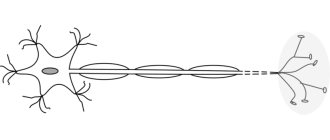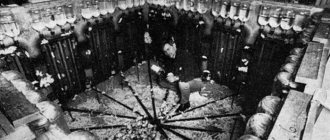The “Hawthorne Experiment” is a name that combines a number of studies conducted in the United States. They were held in Chicago at the Hawthorne Works from 1924-1932. Hence the name of these studies.
The Hawthorne experiment was conducted by Elton Mayo. His results had a significant impact on the further development of sociology as a science, and also influenced the development of the practice and theory of scientific management. After reading this article, you will find out what the essence of the Hawthorne experiment was and what its significance was.
Elton Mayo
Elton Mayo (1880-1949) led these studies.
He was born in 1880, December 26, in South Australia (Adelaide) and was the 2nd child in a family of colonists. It was assumed that he would become a doctor, following in the footsteps of his grandfather. However, Mayo did not show himself at the University and was sent to the UK. Here in Scotland, Elton continued to study psychopathology and medicine. The formation of his scientific views was strongly influenced by the ideas of Freud and Durkheim. Then the scientist returned to Australia to begin working in Adelaide. At that time he was already publishing materials on the topic of management.
In Australia, his academic career was successful. He taught ethics, psychology, logic from 1911-1921, and then became professor of psychology and philosophy at the University of Queensland. After this, he went to the UK on a business trip, but remained by verbal agreement in the US and worked on a number of projects there.
After his university refused to resume the trip, Mayo was left without funds in the United States. Then he received financial support from J. Rockefeller for 6 months and entered the School of Finance and Commerce located at the University of Pennsylvania in 1923. Mayo received the position of associate professor at Harvard University in 1926, as well as head of the department of industrial research. In 1947, the scientist moved to Great Britain and continued his scientific work there. He died in Guildford in 1949, on 1 September.
Mayo led, in addition to the one that interests us, a number of other experiments and projects. A photo of this scientist is presented below.
Hawthorne experiments and discoveries of E. Mayo
Mayo Hawthorne experiment
Mayo's first experiments
Elton Mayo (1880-1940) was born in Australia. At the university he studied ethics, philosophy and logic. After moving to Scotland, he worked extensively in medicine and research in the field of psychopathology. Apparently, here he became acquainted with the works of Emile Durkheim and Sigmund Freud, which had a huge influence on the formation of his views. Mayo then moved to the United States, where he entered the School of Finance and Commerce at the University of Pennsylvania. Since 1926 Mayo becomes professor of industrial sociology at Harvard. The Hawthorne experiments, which brought him world fame, were not Mayo's first studies. Back in 1923-1924. At a textile factory in Philadelphia, he studied the causes of employee turnover. In general, at the factory it was 50-60% per year, which was considered quite normal. However, in the spinning shop of the factory it jumped to 250%. The management of the enterprise was seriously alarmed and the first thing they did was invite specialists in “scientific management”. It is difficult to judge the level of their qualifications, but it is known that they did not achieve success.
After this, the administration turned to Harvard University, where Mayo worked. This was his first field research in industry. He began by carefully studying the working conditions in the spinning mill. A disappointing picture met his eyes. The workers resembled robots, moving back and forth along the aisles of the workshop in constant haste, connecting the ends of broken threads. They either did not have time to talk to each other, or did not have such a desire at all.
Social isolation, lack of incentive remuneration, workers’ complaints about poor health did not reach the administration, they were transferred to the foreman. He, as in pre-Taylor times, was the actual master of the situation and was not going to change anything. The psychological state of the subjects was deplorable: some of them moved as if half asleep, others were irritated and aggressive. The socio-psychological climate was expressed in one word - pessimism.
Mayo's predecessors failed because they saw poor working conditions as the main reason. This was in fact the case, but lighting, dust and noise affected people to a lesser extent than some other, more important factors. It was these that Mayo had to identify after the secondary role of physical factors became clear.
Mayo conducted a thorough interview of workers and established the main reasons: the inability to communicate with each other in the workplace, the decline in the prestige of the profession. To eliminate them, Mayo proposed a very simple improvement. Two ten-minute breaks were introduced, allowing workers to relax a little in a special rest room. The results exceeded all expectations. The psychological climate has improved significantly. Staff turnover was reduced to 60%, i.e. equal to the average factory level, and labor productivity increased by 15%. Finally, Mayo’s main achievement: people’s pessimism has virtually disappeared. They began to look less tired and more cheerful.
Mayo completed the experiment with positive results. However, supervisors did not like the innovation. After the scientists left, they demanded that the spinners complete their rest time. Apparently, they regarded breaks as free time for which they had to pay. The reduction in rest breaks caused a negative reaction from workers: pessimism increased and labor productivity decreased. Everything returned to its place. And only the intervention of the company president made it possible to improve the situation. The workers were again allowed to rest, but not all at once, but in groups of three. The group itself chose a time convenient for rest, but with the only condition: not to interrupt the work of the machines. Labor productivity has increased again.
In assessing Mayo's first experimental study, we make two observations. The post-experimental situation, when managers for one reason or another return to their previous mode of operation, ignoring the conclusions of scientists, is quite typical for management. This was done both in Taylor's time and after him. They not only interfered with his research, but at every opportunity they tried to cancel innovations and return to previous conditions.
The second point concerns the way Mayo interpreted the results of his experiment. On the one hand, he became convinced that organizational and economic factors did not bring success. This was proven by those who, even before Mayo, tried to rationalize production using the principles of “scientific management.” On the other hand, Mayo clearly realized that some other, non-physical factors brought him success. However, Mayo did not know exactly what factors determined high turnover and then led to its reduction. It was only in the Hawthorne experiments that Mayo returned to his earlier experiments and, looking at them in a different light, discovered what had really happened.
Poor health and low productivity interfered with communication at work. Psychological and social needs were awakened in workers only as a result of attention to them from managers.
Hawthorne Experiments: Stage One
Looking ahead, let's say that Mayo was a typical scientist from the category of those who do not know how to learn from either their own mistakes or their own successes. Essentially, in his first study he had already discovered the role of the human factor, and it would be logical to assume that he would begin the Hawthorne experiments with it. Nothing like this. He started again with physical factors and again, as before, failed.
In 1927-1932. The classic Hawthorne experiments take place at the Western Electronic Company near Chicago. They were carried out in 4 stages. At the first stage, the role of lighting was studied. For this purpose, three independent experiments were organized, during which the research program was constantly changing. In both groups - control and experimental - productivity increased almost equally. In other words, when the lighting in the experimental group improved, performance increased. When it got worse, production still remained high. In the control group, the lighting was not changed, but production nevertheless increased. Conclusion: lighting is the smallest factor influencing productivity growth. Or: there is no direct causal relationship between lighting and performance. Apparently, there are other, uncontrollable factors that determine its increase.
Hawthorne Experiments: Second Stage
At the second stage, these same “uncontrollable factors” were studied. To do this, a small group (6 female operators) was isolated from the main group and placed in an experimental room. Together with them there was a scientist-observer who was supposed to record what was happening and create a friendly atmosphere. The subjects were told only the legend (false target) of the experiment to ensure the purity of the study. The behavior of the observer himself is characteristic. To dispel suspicions about the research allegedly being carried out on the operators, he entered into informal conversations every day, asking people about their family, work, and about them personally.
Gradually, the scientist took on the functions of a supervisor (overseer), who professed a soft leadership style. The subjects developed a much closer relationship than would have been the case had they remained in their current position.
Scientists introduced a number of innovations - rest breaks, a second breakfast at the expense of the company, and then a shortened working day and week - that increased labor productivity. When they were canceled, productivity did not drop. The researchers expected that such withdrawal would have a strong psychological effect and sharply reduce production. But the hypothesis was not confirmed. It was then concluded that improvements in working conditions were not the main reason for the increase in output. The question of “uncontrollable factors” essentially remained open. After all, scientists have received more information about what does not affect productivity, but the true reasons remain hidden.
When the researchers analyzed all possible reasons, they came up with 5 hypotheses explaining the relationship between the experimental variables (productivity, working conditions, work methods, fatigue, rest time, monotony, salary). After additional research, the first four hypotheses were discarded, but the fifth was retained: productivity is influenced by leadership methods and improved relationships.
Hawthorne Experiments: Third Stage
To confirm this, which has now become the main hypothesis, at the third stage, a broad scientific program was developed, which required 20 thousand interviews. When the direct survey method failed, it was replaced by a projective one, collecting rich empirical material about people’s attitudes to work. It turned out that the worker's standard of output was determined not by his conscientiousness or physical abilities, but by the pressure of the group, which established the position and status of each of its members.
For a deeper study of the found pattern, the last, fourth, stage of the Hawthorne experiment was organized. Here Mayo again returned from a mass survey to an experiment with a small group (14 assembly workers). The first discovery is a conscious limitation of the production rate. Instead of the scientifically (using timing) justified norm of 7312 operations, the subjects performed 6000-6600 operations per day.
There was no doubt that they could do more. Observations found that people stopped working before their shifts ended, and in interviews many stated that they could have done much more. What are the reasons? Additional research has found: 1) a low pace protects slow workers, thereby protecting them from criticism from superiors or dismissal; 2) if they do too much, the company will cut markups; 3) management accepts the low informal norm as satisfactory, putting pressure only on those who cannot cope with it.
In parallel with the study of workers' attitudes towards their work, the leadership style was studied. It turned out that workers treat managers differently: they consider lower ranks “theirs” and therefore do not think of obeying them; with the head of the site, although they see him as a more authoritative person, sometimes they do not agree; They seem to object to the master, but they don’t particularly listen. In his presence, the workers pretended to work hard, and after leaving they stopped working altogether.
The third issue that has come under scrutiny is the structure of interpersonal relationships. The group within itself was divided into subgroups (cliques), but not according to professional, but according to personal characteristics. Outsiders, leaders and independents were distinguished. Each clique had its own norms and rules of behavior. For example, you should not produce too little or too much; you must not say anything to your boss that could harm your comrades; You should not maintain social distance with your “friends” or be emphatically formal. In the experiment with girls, it was not the structure, but the content of interpersonal relationships that changed dramatically. They did not see themselves as isolated individuals, bound together only by physical contact. In the experimental room, a close-knit small group of “significant others” was created, accompanying each other.
People's social behavior, as it turned out, was only a function of certain group norms. For example, such a behavioral act as deliberate limitation of productivity, or, in Taylor's words, “systematic sabotage,” was a consequence of certain ideas of workers about the intentions of employers (to lower prices in case of increased output) and their role in the organization of production (protecting slow-working individuals and class solidarity). Such ideas, becoming social norms, regulated people's behavior.
There were other conclusions drawn from Mayo's Hawthorne experiments, which together laid the foundation for the formation of the behavioral, or behaviourist, approach to industrial sociology.
Hawthorne effect
Another important consequence of the Mayo experiments, intensively discussed in the methodological literature, is the so-called “Hawthorne effect.” Its essence is that the positive results of the experiment (increased productivity) are caused not by specially created changes (improving working conditions or its organization), the effect of which, in fact, is the subject of research in the experimental situation itself, but by the intervention of scientists. Mayo's critics argue that the increase in output in the girls' group was not caused by the introduction of rest breaks, but by the fact that they liked the new situation, the increased interest in them.
Then, the question arises, why didn’t the group of men increase their productivity, since scientists also paid attention to them? It turns out that in the first group (the girls) they replaced the official boss with a scientist-observer who treated them more kindly and humanely. In the second group (men), everything remained in place, so Mayo did not receive the desired improvements. True, Mayo himself did not agree that a change of director affected the progress of the study, since in the first group, after the scientists left, productivity remained high for another 4 years even under the old management.
To this day, there is no unambiguous assessment of the Hawthorne experiments in foreign literature, although their fundamental significance as a turning point in the history of management and industrial sociology is recognized by everyone. At the same time, Mayo’s extraordinary research talent is noted. There were moments when the results of the experiment baffled scientists. The same studies had to be repeated several times. In such a situation, others gave up, but Mayo had the perseverance to bring many years of complex experiments to the end. In terms of the breadth and validity of the scientific program, the methodological excellence of the experimental part, the reliability of empirical information and professional skill, the Hawthorne studies in the enterprise are the pinnacle of Western industrial sociology, especially when it comes to the first half of the 20th century.
Revisiting the Hawthorne Discovery
In the history of science, it often happens that seemingly unshakable provisions are revised after some time. This is what happened with the Hawthorne discovery. At the end of the 70s, publications appeared that critically assessed the achievements of E. Mayo.
Doubts were raised by the strongest aspect of the experiments—their methodological basis. The use of the latest statistical data, modern methods of regression and graphical analysis has allowed specialists to shed light on the “Hawthorne Effect”. In particular, those primary sources were analyzed (17 boxes of records of the experiment and microfilms stored in the archives of Harvard University are mentioned, as well as several volumes of the company's logbooks) that Roethlisberger, Dixon and Mayo had, but were inaccessible to most of their followers. A closer reading of the sources has allowed scholars to answer the central question: what really happened at Hawthorne?
The main conclusion of sociologists: the increase in labor productivity, contrary to Mayo’s opinion, was influenced not by “human relations” (group cohesion and psychological climate), but by technical, organizational and economic conditions - the great economic crisis of 1929-1933. and the resulting unemployment, changes in the length of the working week and day, the introduction of rest breaks and improved lighting. Challenging the correctness of the experimental methodology, scientists once again analyzed two types of variables—explicit (or controlled) and implicit (uncontrollable).
The first includes material working conditions - forms of stimulation and organization of labor (lighting, supervision, rest breaks, wages). They are easy to measure and monitor their impact on other dependent variables. The second, difficult to take into account factors include “human relations” itself.
When Mayo and his Harvard colleagues conducted interviews, they found no connection between what the workers told the interviewer and how they actually behaved. Scientists realized that it was necessary to distinguish between two groups of variables: 1) verbal, or demonstrated content of responses and 2) latent, implied, that is, what the workers thought about to themselves, but did not say out loud.
And the worker himself, perhaps for reasons of illiteracy or for some other reason, was not always able to accurately describe exactly what forms influenced his behavior - physical or moral.
The workers also could not clearly answer whether an informal group existed on their site or not. And it was even more difficult for them to decide what a feeling of attachment to a group is, whether they want or not to take into account its opinion, what participation or self-esteem is. The answers were most often confused and contradictory.
Sometimes the situations were downright funny. At home, the husband quarreled with his wife, and when he came to work, he expressed dissatisfaction with the noise and high air temperature, his relationship with his boss, and in general he was dissatisfied with everything in the world. Another worker was outraged by the low wages. And all because his wife is in the hospital, and there is nothing to pay for treatment. The third transferred to the master the authoritarian stereotypes that were inherent in his father. These are all examples of variables hidden behind the verbal content of the answers and more real facts. Mayo, Roethlisberger and Dixon had to invent sophisticated techniques to weed out false information. But they were not always able to avoid “extraneous noise” and achieve the required purity of information.
The question of how adequate the theoretical interpretation of the data was remains unclear. Scientists were led to the conclusion about the existence of small groups that constitute a kind of social system of an enterprise not so much from empirical results as from the theoretical work of their predecessors, primarily Durkheim, Simmel and Pareto.
The small group phenomenon was discovered during observations conducted under the direction of Lloyd Warner. Before his arrival at Hawthorne, Warner carried out a number of studies on the life of the Australian Aborigines, after which he studied the industrial strike movement. Naturally, he transferred the principles of anthropology to the field of sociological research. Could Mayo have discovered the small work group phenomenon without prompting?
The Hawthorne experiments were criticized by Wardwell, who argued that in 93% of cases, the growth of output in the experiment was influenced not by psychological factors, but by material conditions associated with the economic crisis, rising unemployment, a form of directive supervision, and the use of harsh sanctions.
In fact, the increase in labor productivity could be caused by the fear of losing a job, which would be more than real in an economic depression. The threat of violence also played a role. During one of his experiments, Roethlisberger, who wanted to establish trust in the group, kicked out two uncooperative girls, giving critics food for accusing Mayo of manipulating the behavior of the workers being studied.
It was the second phase of the experiment that became the center of critical debate. The blow was struck at the central and most successful experiment in the series of Hawthorne experiments, namely the study of the work of a team of female operators. It was here that Mayo actively manipulated social factors. According to the latest data from R. Franke, the master literally terrorized all five, threatening to fire them at once in case of disobedience, extraneous conversations, or if they allowed themselves prohibited rest breaks. And with this method it was possible to increase production, and to replace the two fired girls with a new, more flexible female operator. She turned out to be very active and, with her high productivity, stimulated others to work energetically. All this, of course, played into the hands of the administration, and the newcomer was called a “decoy.”
Claims are also made about the technical design of the experiment results. According to Franke, if the responses had been recorded more accurately than they actually were, then perhaps the results would have been different. After all, the experiment took into account only one type of independent variables - technical and organizational working conditions (breaks, length of the working week, output). They really had little influence on the essence of what was happening. But there is a second type of material conditions - economic factors.
We are talking about the impact of the economic crisis, rising unemployment, and the arbitrariness of entrepreneurs. They had to be registered, which was not really done. Perhaps that is why it was necessary to introduce another type of variable - the human factor? Or the question can be formulated differently: which of the two groups of factors had the greatest impact on productivity growth? It is difficult to answer, since some factors were recorded and others were not. But both groups of factors had an impact on productivity.
Denial of the influence of economic factors can be considered a rather serious methodological error. After all, the Hawthorne experiments were not carried out in an ordinary historical setting; great depressions do not happen often, and this circumstance should have been taken into account.
However, regardless of whether the influence of “human relations” is ultimately proven or not, considerable doubts arise about the reliability of their existence. According to Madge, the same group of girls on whose example Mayo so effectively demonstrated his discovery was created not by random sampling, but deliberately: first, they found two who were friends with each other, and they then selected partners at their own discretion. Everyone was specially trained and instilled with confidence in ultimate success. It is clear that if you first set the properties that need to be obtained at the end, then success is guaranteed. But in other conditions it might not have existed, just as Mayo did not achieve success in an experiment with a group of men: they stubbornly adhered to low production standards.
What was the experiment based on?
The Hawthorne experiment was intended to implement a social plan, which is based on certain theoretical principles. For Mayo, these guidelines were the ideas of E. Durkheim and F. Le Play, French sociologists. From them, the leader of the Hawthorne experiment adopted the idea of disintegration of the human personality in modern society and criticism of the formalization of various public organizations. The latter was especially expressed in E. Durkheim’s work “Suicide. Sociological study", published in 1897. Behind the humanistic ideas there was a criticism of the alienation of the human personality in society, which is constantly increasing.
Mayo's critique of capitalist society
Contemporary Mayo's critique of capitalist society was directed at the fact that informal or primary organizations were being destroyed by an industrializing society. In his opinion, they are vital for the preservation of any society. In addition, the object of criticism of this scientist was the growing institutionalization of society, as well as bureaucratization, its inevitable companion, turning people into isolated atoms, generating hostility between them and ignoring the whole world of human emotions.
Mayo emphasized that there is a widening gap between the moral and social level of society and its economic and technical development. At the same time, he recognized the inevitability of various destructive consequences of progress and believed that the ideas of supporters of a return to outdated forms of social organization were fundamentally wrong.
How did Mayo explain the nature of social conflicts?
E. Mayo explained the negative consequences by the ignorance of society, which destroys the natural desire for direct communication. He translated the explanation of social conflicts and problems into the plane of psychoanalysis, in which the main emphasis is on the suppression of the aspirations of the individual by sociality, the elimination of the unconscious in it. This unconscious takes revenge on society, breaking out.
As Mayo believed, inability to adapt to various social deprivations and social conditions of an individual leads to the fact that its psychological positions become unstable. Hostility, aggressiveness, and neurotic breakdowns appear. By counteracting the desire of individuals to cooperate, modern society inflicts violence on the psyche. And since in society the unadapted are the majority, this results in strikes in production, staff turnover, as well as undermining the so-called social integrity of the company. Outside the enterprise, such “neuroticism” leads to the emergence of supporters of destruction, in particular revolutionaries. They are generated by poor living and working conditions.
Elton Mayo books. Yulia Alexandrovna Petrova, Elena Borisovna Spiridonova George Elton Mayo
Elton Mayo was looking for ways to apply the achievements of psychiatry and social sciences to problems of labor organization and practical management methods. He criticized engineers and management theorists, in particular F. Taylor, for paying attention exclusively to technical organization and believing that worker motivation was ensured solely by economic incentives.
In 1919, he published the monograph “Democracy and Freedom,” dedicated to the political problems of industrial society, in which he criticized the modern system of representative democracy based on the party principle. Drawing on some of the ideas of psychologists Sigmund Freud and Carl Jung, he argues that politicians “stimulate subconscious fears, link them to social and industrial problems and then offer some remedy for their solution.” As in his other works, he tries to find elements that would bind society together, rather than divide it. According to E. Mayo, party politics, with its inherent artificial stimulation of conflicts, inevitably leads to increased social stratification and cannot contribute either to the establishment of social harmony or the achievement of individual autonomy. For democracy to be constructive and not destructive, a certain political education and enlightened leadership are required, through which irrationalism and prejudice will give way to rational thought and awareness of the real state of things. Rejection of any kind of phenomena, one way or another connected with the emergence of conflicting political situations, and the desire to achieve social harmony become constant themes in the works of E. Mayo.
What was Mayo's big idea?
Mayo's main idea was to take into account the aspirations of man, to direct them to the service of self-organization and self-regulation of society, conducive to spontaneous cooperation between people. Mayo proceeded from social needs related to maintaining the balance and stability of society. He proposed his own approach to solving this problem, called the sociological approach in his works. He relied largely on personal experience in managing social processes in the sphere of production.
Social leadership concept
Mayo created the concept of so-called social leadership. In it, a decisive role is given to the ability to interact with others and respond to their attitudes and aspirations in a way that contributes to the establishment of cooperation. Following the results of his Hawthorne experiment, Mayo placed his main bet in the formation of social harmony on the so-called enlightened managers. In his opinion, it is they who are capable of scientifically objective and impartial leadership. Emphasizing their transformative role in society, he contrasted the centralization of power in politics with its democratic dispersal among managers. This dispersal of power was seen as a supra-class approach and was contrasted by Mayo with a class approach, which was associated with political forces.
The role of managers in modern society
The scientist, based on a process that reflected the growing independence in modern society of managers, concluded that they are turning into bearers of the morality of cooperation and democratic power, as opposed to the morality of coercion professed by politicians. The focus on the social function of managers stemmed from the belief that the power of knowledge, science and education plays a decisive role in social life. Mayo's main recommendations were aimed at training leadership with social leadership skills. Many of this scientist’s theses were later developed into independent concepts of sociology.
Hawthorne effect examples. Hawthorne effect
The Hawthorne experiment produced so much data that it allowed many important scientific discoveries to be made. The main discoveries were: the importance of behavioral factors, relationships with managers and what is now called the Hawthorne effect.
The Hawthorne effect is a condition in which novelty, interest in an experiment, or increased attention to a given issue leads to a distorted, often overly favorable, result. The participants in the experiment actually worked much harder than usual, thanks simply to the knowledge that they were involved in the experiment.
Today, behavioral scientists are well aware of the Hawthorne effect and design their programs to avoid it. However, there are still frequent cases when, after the end of the experiment, scientists discover the presence of the Hawthorne effect. For example, many companies are caught biasedly testing the marketability of new products before launching them into production. The bias would be that they put in more effort during market testing than under normal production conditions. As a result, a new product, when it enters mass production, may not reach the level of market attractiveness identified during testing, because marketers no longer pay much attention to it. Likewise, a new training program aimed at improving job and personal relationships between managers and subordinates is often successful only at the very beginning. However, over time, managers may revert to their old habits because they no longer receive the support and attention they had during the program.
First stage of the experiment
The Hawthorne experiment consisted of 3 main stages and was carried out in the context of the ideas outlined by Mayo. The first of these was the lighting experiments that were carried out in the test room in 1924-1927. Their goal was to find out what relationship exists between lighting intensity, its change and labor productivity. The result obtained was quite unexpected. Workers' output increased with increased lighting in the test room, but not only in that room, but also in the control group, where the lighting was kept constant.
After the decrease, its production, however, continued to increase in both groups. At this stage of the study, two main conclusions were made by Mayo, which actually laid the theoretical basis for further experiments in the field of industrial production. First: there is no direct relationship between some variable and productivity. Second: we need to look for other, more important factors that determine labor behavior. This was the essence of the Hawthorne experiment at its first stage.
Criticism of the Hawthorne experiment
Not all scientists were enthusiastic about the results of this study. Many saw it as a lack of proper cleanliness and an extremely unprofessional approach. Here are some of the main points that have been criticized:
- the study did not have one control group with which the results could be compared;
Photo by Christina Morillo from Pexels
- employees perfectly understood the essence of testing, so they were not particularly susceptible to manipulation by their superiors and scientists;
- there was pressure from management levels;
- there was a fear of losing earnings if expectations were not met (the period of the Great Depression had an impact);
- During the experiment, several colleagues began to show open dissatisfaction, so they were replaced by others who turned out to be more loyal to the study.
Each experimental testing in the field of psychology must be considered in great detail and take into account not only the results, but also the methodology itself.
When the motives of all participants in the experiment, their personal qualities and social factors are directly studied, the results of the study will be much more informative and useful for practical application.
The role of group spirit in the work environment
The research was subsequently expanded. Other factors were introduced as variables: humidity, room temperature, etc. Various combinations of rest breaks and working hours were also tested. Output as a result of all this increased steadily without connection with experimental changes. In the work environment, there was also an improvement in the social climate. Scientists explained such positive phenomena by reducing the monotony of work, fatigue, increasing material incentives for work and changing management methods. However, the main reason found was the group spirit that arose among the workers in the test room due to the system of rest breaks.
Its strengthening affected the cohesion of workers both during production and outside working hours. Researchers realized that working conditions influence labor behavior indirectly through attitudes and their perception. They concluded that in production settings, interpersonal communication can have a beneficial effect on work efficiency.
Unexpected discoveries of scientists
When the study parameters were changed, the labor efficiency coefficient in the experimental group increased relative to the control group. However, when the parameters were equalized, performance decreased. Although its indicator was still higher than initially.
This behavior of female employees aroused the interest of researchers. This situation prompted scientists to determine another factor - the fact that female workers were involved in the experimental study:
- awareness of the significance of what is happening;
- increased interest from others;
- engagement concept.
These indicators had an impact on increasing staff productivity, even in the absence of other favorable factors.
Second stage of the Hawthorne experiment
We continue to describe the stages of the Hawthorne experiments. There were only 3 of them. In 1928-1931, the Hawthorne experiment continued with the second stage. It was a study of only the subjective sphere of the attitude of factory workers to management, working conditions and their work. The author of the Hawthorne experiments concluded on the basis of the data obtained that workers' dissatisfaction was only in some cases due to objective reasons. The main reason for it was individual perceptions, largely related to the person’s experience in previous places of work, his relationships in everyday life, with comrades. This meant that changing the elements of the external environment alone could not bring the desired result.
The researchers concluded that the interviews they conducted among 21 thousand workers can be used to provide psychological relief to those who are dissatisfied with working conditions, to improve their understanding of the current situation at work. On this basis, a whole program of various measures for the psychological and social adaptation of personnel to working conditions was subsequently built.
Milgram's experiment. Behaviorist study of obedience
In this chapter we will describe the procedure for studying the phenomenon of destructive submission in a laboratory setting. As the experiment progressed, subjects who were not informed about the specifics of the experiment were forced to punish the victim more and more severely, while the whole situation was portrayed as a training experiment. A current generator was used as a punishment apparatus. There were thirty switches on the current generator, ranging from the “low current” button to the “danger: high current” button. The role of the victim was played by the experimenter's assistant. The main dependent variable is the maximum amount of current the subject agrees to administer to the victim before refusing to continue the experiment. Twenty-six subjects completely obeyed the experimenter's commands and received a shock of the highest intensity. 14 subjects stopped the experiment at one point or another after the victim began to protest and refused to answer. This procedure caused severe nervous tension in some subjects. They were sweating, shaking and stuttering, displaying typical emotional distress. An unexpected sign of tension that has yet to be explained. - These are regular bursts of nervous laughter, which in some subjects developed into uncontrollable seizures. The behavior of the subjects during the experiment changes quite unusually and interestingly. The subjects perceive the situation as reality, it is possible to change the parameters of the study and its procedure itself - all this indicates the fruitfulness of further work in this area.
Final, third stage
Mayo's Hawthorne experiments culminated in the third stage. The researchers are now back to using the test room. But the task was posed differently - to consider human behavior in the sphere of interaction and relationships with other members of the production team. The results obtained through interviews and observation showed that the work group has a complex organization, that it has its own standards and norms of behavior, a scale of assessments and values, and various connections that go beyond the requirements.
These standards have proven to be capable of regulating output, as well as relationships with management and other aspects. It was established that each member of a certain group occupies a position in it according to the degree of prestige and recognition with which it has endowed him. Thus, groups based on psychological and social preferences were identified. And they influenced the motivation of workers to work.
This is the essence of the Hawthorne experiments. Let us now consider their meaning.
Stage 4. Group of assemblers
A small group (14 assembly workers) was studied.
Firstly, the reasons were found out why workers deliberately limited production standards , admitting in interviews that they could do more.
Additional research found:
1) a low pace protects slow workers , thereby protecting them from criticism from management or dismissal;
2) if they do too much, the company will cut markups;
3) management accepts the low informal norm as satisfactory, putting pressure only on those who cannot cope with it.
Leadership styles, reasons why workers disobeyed orders from managers at different levels, and the structure of interpersonal relationships were also studied.
The group within itself was divided into subgroups ( cliques ), but not according to professional, but according to personal characteristics. There were outsiders, leaders and independents, and each clique had its own norms and rules of conduct.
Significance of the Hawthorne Experiment
Mayo's Hawthorne experiments led to a reconsideration of the role of human factors in production. There was a shift away from understanding the worker only as an “economic man.” It was considered simplified. The essence of the results of the Hawthorne experiments was the discovery of the phenomenon of the so-called informal organization. Many aspects of the social life of the work collective became clear through her. The results of the Hawthorne experiments laid the foundation for the theory of human relations, one of the most important in the development of scientific management and industrial sociology.
The result of the Hawthorne experiments is the discovery of the social effect of the influence of such informal groups of workers, which made serious adjustments to production management. It turned out that for the worker the desire to be accepted in them clearly outweighed the value of administrative measures aimed at stimulating labor. Also, the result of the Hawthorne experiments is the realization that for workers, small groups are one of the main sources of psychological satisfaction during the work process, an environment in which the motives of their behavior, value orientations, attitudes, and attitudes towards production standards and work are formed. Further development of the concept of human relations continued to search for measures that contribute to the coincidence of the goals of the enterprise with the goals of these small groups.
The Hawthorne experiment of 1924-1932 gave a lot of interesting information in the field of methodology and procedure for conducting social research. He helped Mayo identify during the war the role that management's relationship with personnel played in reducing employee turnover at California aircraft plants.
Human Relations Theory
The synthesis of the results of these studies began to formulate several important principles. Mayo's Hawthorne experiment later developed into a theory of human relations. In such works as “Management and the Worker” (published in 1939), as well as “Management and Morality” (1941), the principles of production management were specified, taking into account the informal elements of the structure of firms discovered during the experiment. They also examined some problems of psychological and social stimulation of work. This approach, which used the findings of the Hawthorne experiment, allowed many of the findings to be translated into practical recommendations that managers can use.
In the theory of human relations, the emphasis is shifted to such a side of production life as the human one. Its representatives emphasized that formal organization is not so important. Success is determined by the people working in it and the coherence of the relationships between them. The famous Hawthorne experiments showed that, in addition to the economic effect, an enterprise must also have human efficiency, that is, give psychological satisfaction from work to people.
This can be achieved by taking into account the social and emotional connotation that the hierarchy of statuses, the company’s remuneration system, complaints handling, decision-making procedures, and methods of rationalization and production management acquire in the eyes of the worker. In addition, the informal team with its habits and traditions must be taken into account.
Criticism
The famous sociologist Stanley Milgram considered the Hawthorne experiment unreliable. In his opinion, workers increased their productivity simply out of fear, because they mistook the psychologists for spies sent by the company management. And therefore, the data obtained as a result of the experiment, according to Milgram, are random.
A detailed study of the experimental conditions revealed interesting details
:
- When the five selected pickers were transferred to new premises, two of them were removed from the experiment for refusal to comply and low productivity. Another worker was excommunicated from the experiment because she allegedly “joined the Bolsheviks.” One of the selected women was initially the fastest and most productive picker, which ensured better results for the entire group.
- Data on relay assembly at each stage were produced biased. At the twelfth stage, the results were recorded not every hour, as before, but every week; Moreover, at this stage, female workers worked six hours more per week than previously. If the results were recorded in the same way as in the first stages, a slight decrease in productivity would have been noted.
- It was noted that women did not like the difficult working conditions, but they were afraid to complain, since in this case they would be deprived of their bonuses.
- Perhaps the increase in labor productivity was caused by the fact that workers were additionally rewarded for increased productivity.
- Workers often refused to obey the new rules because they did not fully understand what they wanted from them. When they were offered more efficient methods of work, they began to protest, claiming that they were being turned into robots.
Thus, the Hawthorne experiment, with an external demonstration of the “carrot”, could also have a “stick” hidden from the direct observer. This leads to the existence of hidden contradictions in the production process and in the socio-economic structure of society.
Such contradictions are discovered from time to time even in the most seemingly prosperous and advanced organizations. In addition to purely external “human relations”, there may also be some “shadow” relationships in the company that are not so rosy. New employees, who are initially delighted with attractive working conditions, gradually begin to notice the presence of strict and even inadequate rules, the whims of the administration, and insufficient wages.
Still, one should not completely reject the significance of the Hawthorne experiment. It made it possible to significantly modernize the production process, set a trend towards increasing labor productivity, and also erased the insurmountable boundary between workers and enterprise owners.
Conclusions drawn by F. Roethlisberger
As F. Roethlisberger, one of the participants in the experiment who created the work “Management and Morality,” emphasized, it is impossible to understand the behavior of a worker based only on economic and logical premises, leaving the role of group habits and traditions without attention.
In this regard, they brought to the fore the figure of the so-called enlightened manager, who is obliged to help workers adapt to the production environment. Improving the system of social intra-factory communications became an important condition. It acted as a condition for mutual understanding, the establishment of bilateral contact and cooperation between the administration and workers.
The role of communication was also to ensure communication between information flows in the informal and formal structures of the company, orienting workers to the need to achieve a common goal. Specific and timely information about the mood among workers, according to Roethlisberger, allows management to build relationships with staff taking into account the value orientations and aspirations of workers. Hence, he placed emphasis on all types of social relationships that arise in the labor process, from the manner of communication to promotion, the nature of labor motivation, and participation in the distribution of work.
Exploring various mechanisms for the formation of the consciousness of workers as members of society, trying to find ways to harmonize opposing values and norms in one “social code” of the enterprise, F. Roethlisberger thereby approached the problem of worker socialization.
The Hawthorne Experiment was a turning point not only in the development of applied sociology, but also of management theory. This is recognized by modern sociologists, although there is no unambiguous assessment of the phenomenon discovered by Mayo in Western literature.











